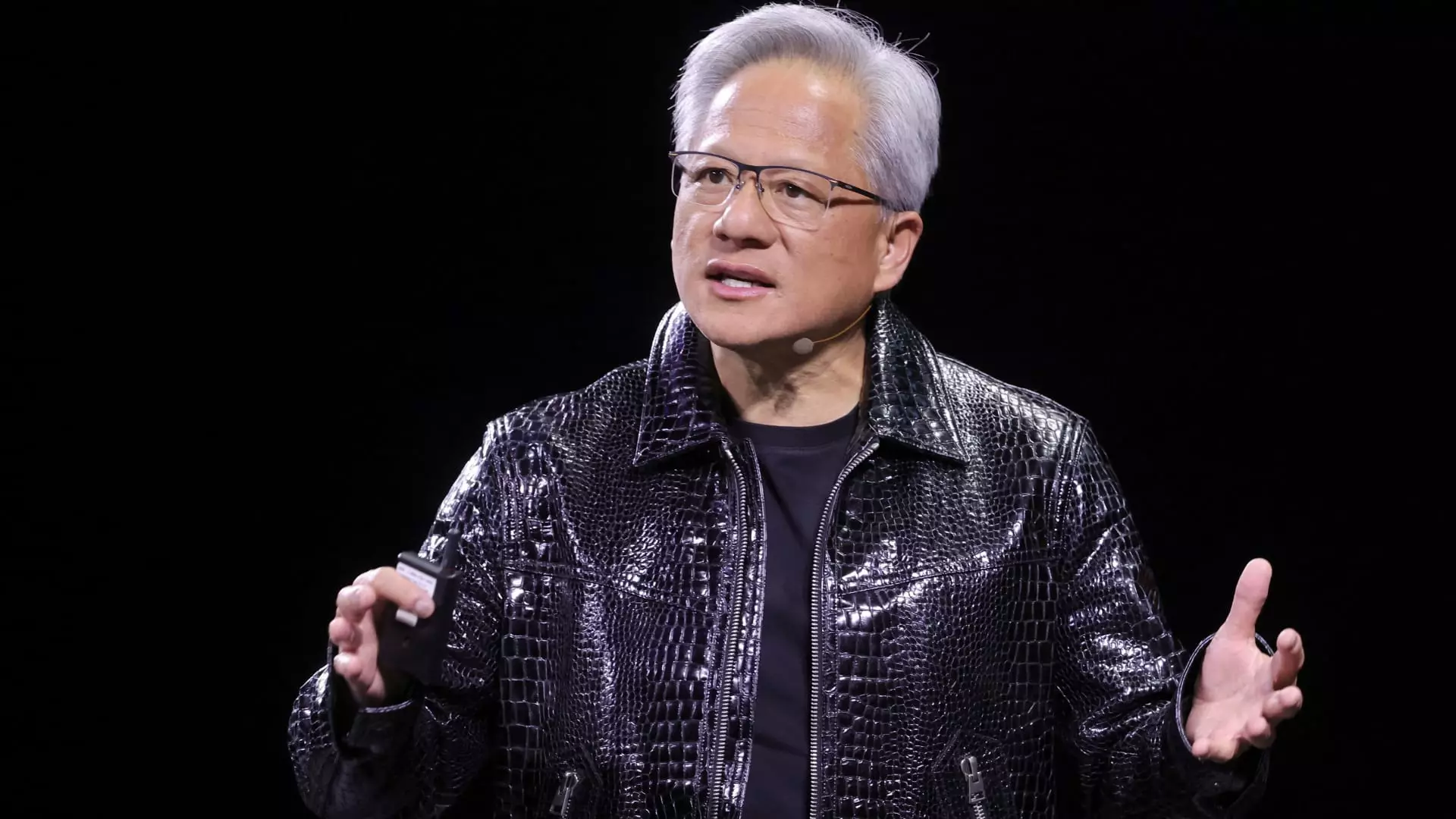Jensen Huang, the charismatic CEO of Nvidia, attempted to wrestle control of the narrative around quantum computing during his recent keynote at the company’s inaugural “Quantum Day.” Despite his intentions to recalibrate the timeline for meaningful quantum advancements, the event served as a glaring reminder of the precariousness that permeates this niche tech sector. Huang not only witnessed a notable downturn in his firm’s perceived investments in quantum technology, but he also watched several sector stocks plummet following his more optimistic spin. This episode illustrates a fundamental truth: the world of quantum computing remains a minefield of ambition overshadowed by uncertainty.
At the center of the storm was Huang’s admission that his earlier remarks—predicting a 15-year wait for practical quantum applications—were flawed, effectively backtracking on a projection that rattled the markets in January. Not a reassuring sign for investors, Huang’s about-face was illustrated when D-Wave shares plummeted by 18%. This substantial sell-off evoked a palpable sense of investor skepticism around Huang’s commitments. In an industry already filled with grand hypotheses and soaring expectations, the warning signs are flashing brightly.
A Market Reaction That Speaks Volumes
One cannot overlook the financial ramifications of Huang’s statements following his presentation. The immediate market response was underwhelming at best, with prominent quantum stocks like Rigetti Computing and IonQ witnessing collective losses. In an industry fervently grasping for legitimacy, this tepid reception serves as a stark reminder that markets respond to sentiment as much as they do to metrics.
Independent analyst Quinn Bolton pointed out how Huang alluded to the notion that quantum computing should complement rather than replace classical systems. This insight, intended to recalibrate expectations, only emphasized the disjuncture between the potential applications of quantum technology and what investors currently perceive. It raises critical questions surrounding the operational viability of quantum within existing frameworks. Perhaps, within this framing, Huang inadvertently reinforced what many have long suspected: quantum remains mired in the realm of promise.
Perception vs. Reality in the Quantum Landscape
Nvidia is a demonstrated leader in technological innovation, yet even their prodigious capabilities are not immune to the confounding uncertainties of quantum computing. Huang’s lofty proclamations regarding its potential have created an illusory ceiling that many are now questioning. The stark contrast between the hype surrounding quantum and the reality of its operational capabilities is unsettling for any investor hoping for immediate breakthroughs.
While Huang did present a vision that included a collaborative ecosystem of quantum systems working alongside classical models, that vision alone is insufficient as a remedy for investor trepidation. If anything, it underscores the need for a more robust marketing strategy that accurately reflects the current state of technology rather than unbounded optimism. The promise of quantum has been the subject of fervent interest, yet its realization seems perpetually deferred—a trend that has left many investors disillusioned.
Nvidia’s Strategic Positioning: An Opportunity or a Defense Mechanism?
Despite the negative market reaction, Nvidia’s proactive measures, including the establishment of a research hub aimed at intertwining quantum computing with esteemed institutions like Harvard and MIT, signal a desire to anchor its commitment to the field. But one cannot help but wonder if this initiative is a viable strategy toward creating genuine advances or merely a defensive maneuver to placate investors searching for reassurance.
Nvidia’s core strength lies in its GPUs, essential for the simulations that fuel quantum research. While this provisioning establishes Nvidia as a necessary cog in the quantum machine, it doesn’t mitigate the growing apprehension about the timeline for tangible applications. Is Nvidia positioning itself as the bridge to quantum’s promised future, or is it merely protecting itself against rising doubts?
Huang’s Vision: A Double-Edged Sword
In the final analysis, Huang’s presentation was filled with optimism and admiration for the transformative potential of quantum technology, but this positivity feels increasingly detached from reality. The cacophony of excitement and concern surrounding quantum technology blurs the lines between innovation and impracticality. The narrative of quantum computing has become both a beacon of hope and a profound source of confusion, reflecting the delicate balance between ambition and attainable outcomes that any center-right thinker grapples with.
The market is not just fragile—it is volatile. As we reflect on Huang’s remarks during Quantum Day, one is left pondering whether his pointed calls for a tempered vision will open up a more constructive dialogue about the realities of the quantum frontier, or if they will further entrench the disillusionment that already grips this fledgling industry. As someone riding the fence of skepticism and hope, it’s vital to scrutinize the implications of Quantum Day closely in the months to come.

